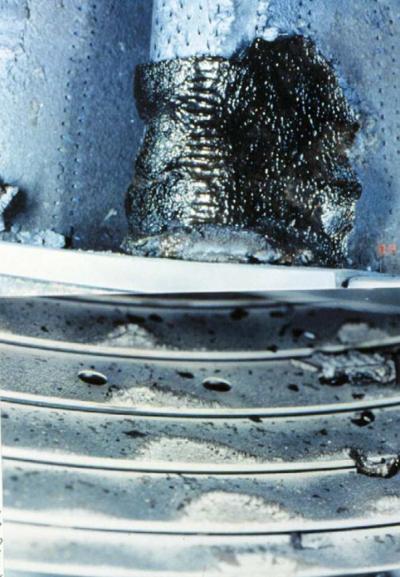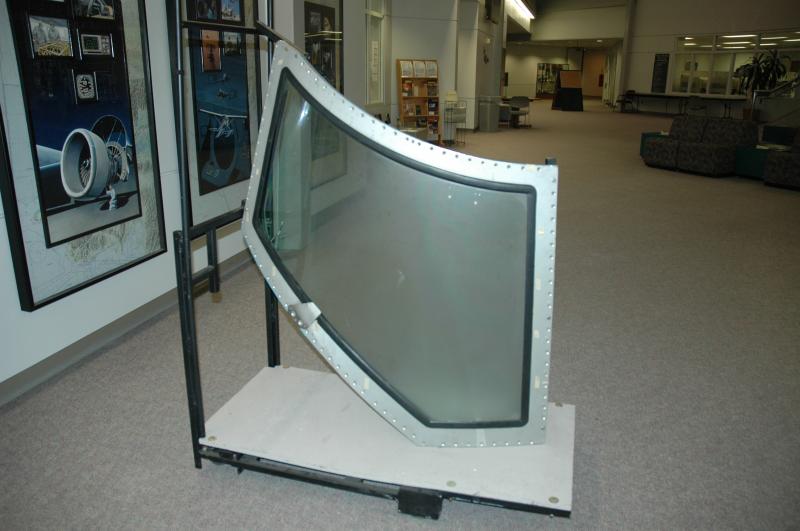Pollution ash volcanic can also lead to failures in critical navigational instruments and operation. Furthermore, the melting temperature of the material that makes up an ash cloud is lower than the combustion temperatures in jet engines ; as a result of it , the ash particles sucked into an engine can melt quickly and accumulate as deposits solidified in cooler parts, which deteriorates the performance of the engine even to the extent of power loss l you will compressor is in flight and consequently loss of thrust . In the upper part of Photo 1 , we can see the dark glassy deposits of volcanic ash at the leading edge of a high turbine vane, and in the lower part of the same photo, accumulation of unmelted ash in one of the the rotors of another turbine.

ICAO document 9974 » Flight safety and volcanic ash « gives us an idea of the indicators that an aircraft close to an ash cloud could find:
• Odor. Upon encountering volcanic ash, the flight crew often notice a pungent smoke or odor similar to that of an electric shock, burned dust, or sulfur.
• Calima. Most flight crews, cabin crews, and passengers see haze forming within the flight deck and / or cabin of the aircraft. Dust may deposit on surfaces.
• Modification of engine conditions. Voltage surges, exhaust fires and flame extinctions can occur. Engine temperatures may unexpectedly change and a white glow may appear on the engine intake. All this as I mentioned before, would end not only in a loss of the engine or engines, but also failures in the electrical, pneumatic and hydraulic systems.
• Aerodynamic speed. If volcanic ash obstructs the Pitot tube, the indicated airspeed may decrease or fluctuate irregularly.
• Pressurization. The cabin pressure can vary and even a loss of pressurization can occur.
• Static downloads. A phenomenon similar to the flashes or fires of San Telmo can occur. In those cases, blue sparks may appear to appear to rise from outside the windshield, or a white glow may appear at the leading edges of the wings or at the front of the engine intake.

Furthermore we must add to this that the abrasive nature of volcanic ash also adds other notorious problems on aircraft:
• Partial or total darkening of the windshield . In photo 2 , you can see the front window of a 747, irreversibly darkened on the right side, when crossing an ash cloud in 1989 in Alaska USA.
• Contamination of cabin air, so the crew must wear oxygen masks.
• Erosion of the external components of the aircraft;
• Reduced efficiency of electronic cooling and, since volcanic ash easily absorb water, possible short circuits causing a wide variety of aircraft system failure and / or abnormal behavior;
• Flight crew maneuvers to avoid the volcanic ash cloud; those maneuvers could affect other nearby aircraft;
• Volcanic ash deposits on a track, which decrease the performance of the brakes, especially if the volcanic ash is wet; in extreme cases, this can lead to the closure of the track; and
• High levels of contamination of aircraft ventilation and pressurization systems, cleaning or replacement may be necessary in the event of air conditioning system contamination and abrasion of rotating components, ozone converter contamination and filter clogging. of air.
Any one of these indicators should be sufficient to alert the flight crew to an ash encounter and appropriate steps should be taken to leave the contaminated airspace as quickly and safely as possible.
As we read, the potential danger of a volcanic ash cloud directly impacts the safety and finances of airlines. It is of utmost importance that the crews and operational control areas of the companies are constantly monitoring the development of this event and high winds and make an analysis of these and the airways that exceed the affected area or that could be affected by Some change in meteorology , for this it is helpful to refer to appendix 6 of document 9974, where you will find guidelines that will serve you greatly .
Dithel Bless




